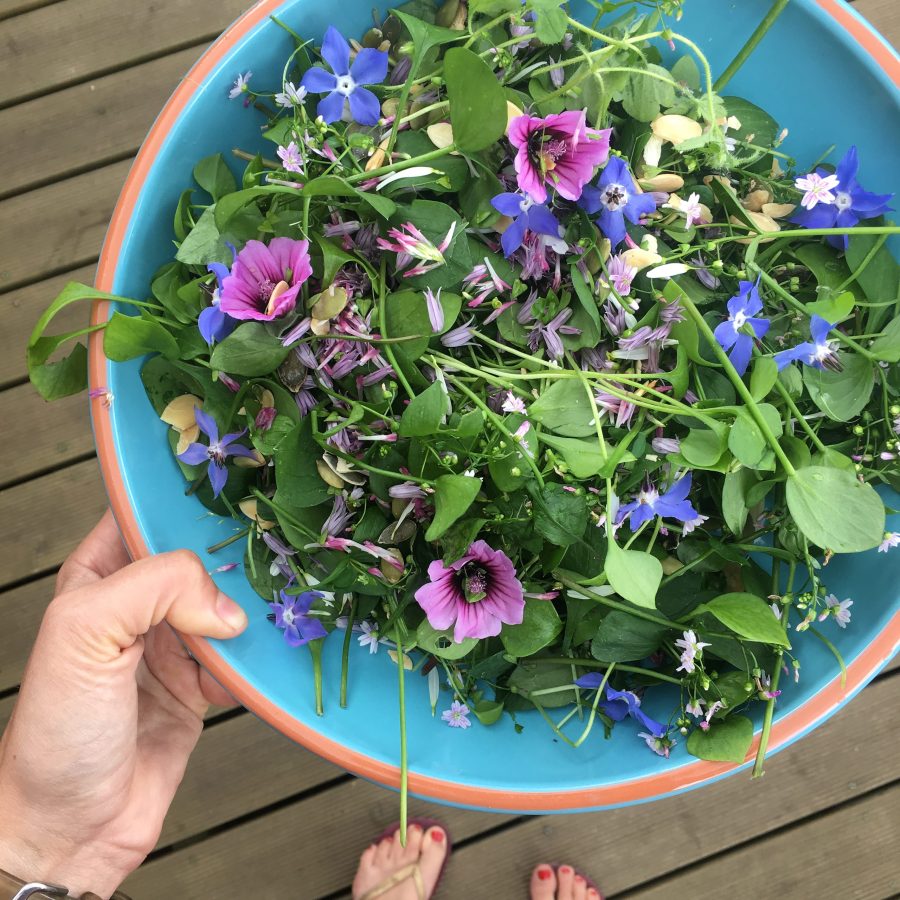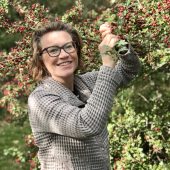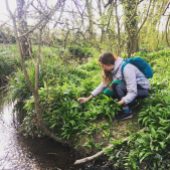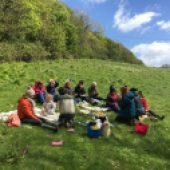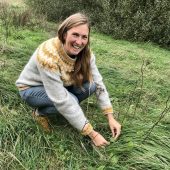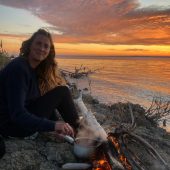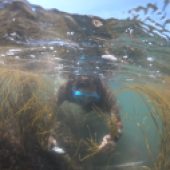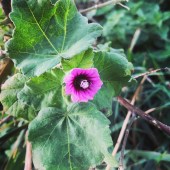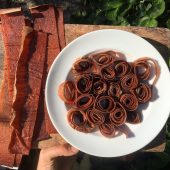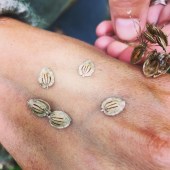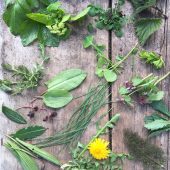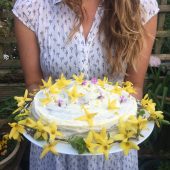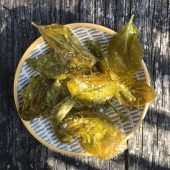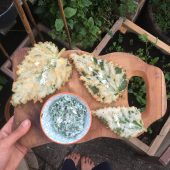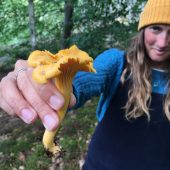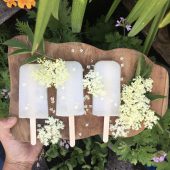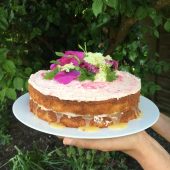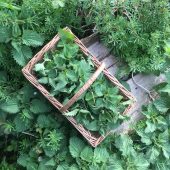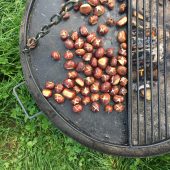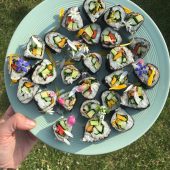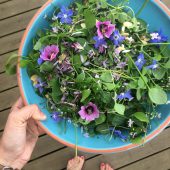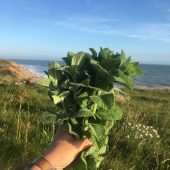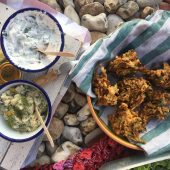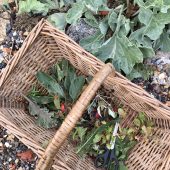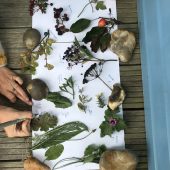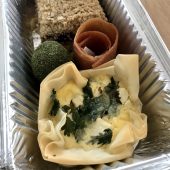Islander Alex Richards has a passion for foraging wild edibles on the coast and using them in everything from fancy cakes to fruit leathers, as food writer Fiona Sims discovers
Alex Richards’ enticing Instagram feed first alerted me to the food foraging potential on the Isle of Wight. From her wild rose ripple buttercream and elderflower curd sponge cake to her sea beet and goats’ cheese tart, clearly I was missing something on my frequent walks around the island. Just 13.5 miles long and 22.5 miles wide, this squashed diamond-shaped isle off the south coast of England is packed with an astonishing variety of landscapes – a ‘best bits’ of the mainland, from rolling, broad-backed open downs and tranquil estuaries teeming with bird life, to glorious ancient woodland, sandy bays and wooded chines. About 75% of the island’s coastline is classed as a site of special scientific interest (SSSI), which means you can’t forage commercially, but there are a few spots where you are free to gather.
Alex only started foraging four years ago after a friend gifted her a course in the New Forest just over the water and now she can’t stop, spending her lunch breaks wandering the cliffs at Ventnor, where she works as an occupational therapist. Luckily for us, she decided to share her new-found passion with other like-minded souls and spends weekends guiding small groups of all ages around the island’s hidden edible treasures.
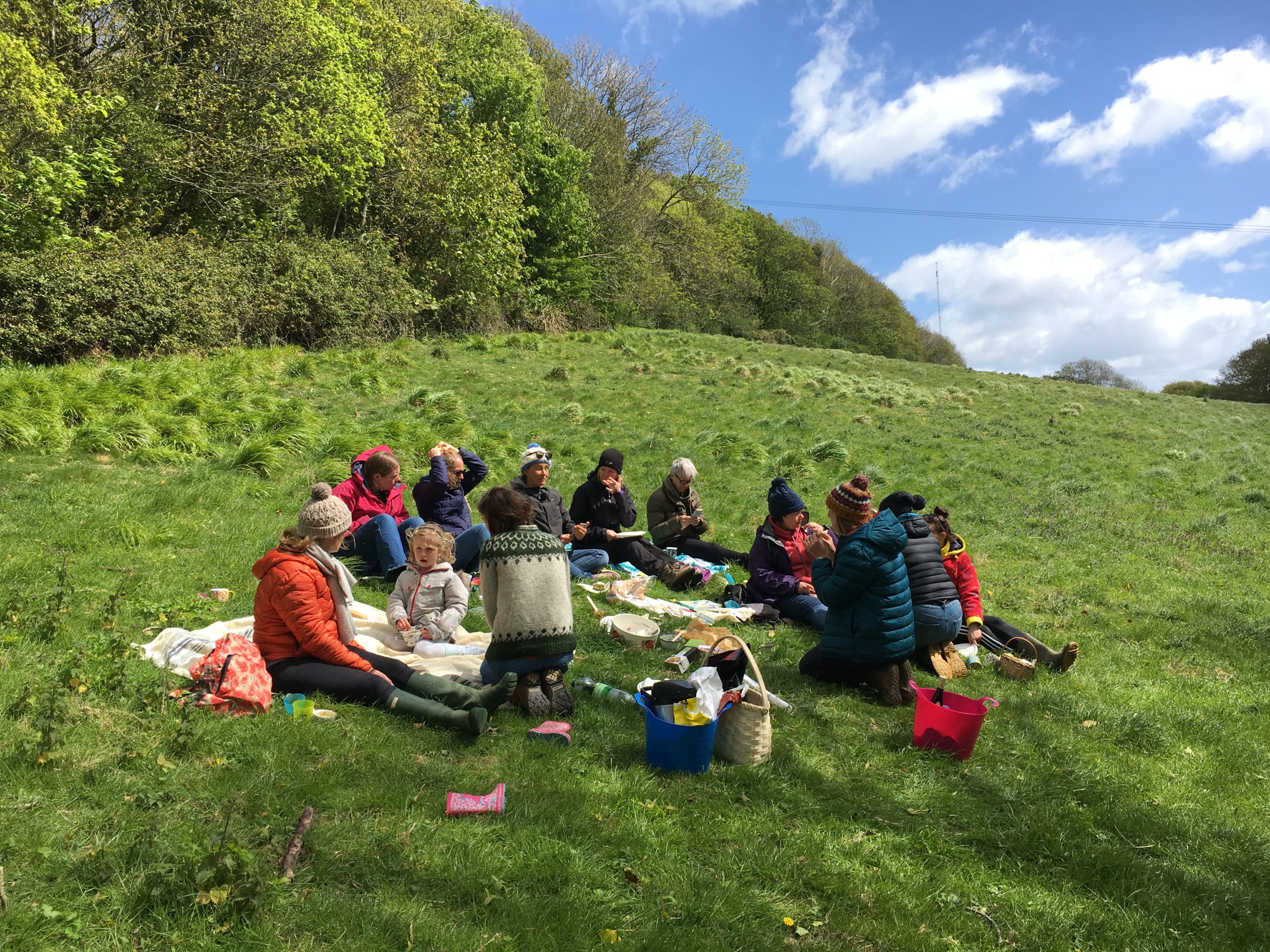
10AM FUNGI FIND
There’s a stiff breeze funnelling through The Needles as we gather on the cliff-top overlooking Totland Bay. It’s one of four spots on the island where Alex likes to forage and one of her favourites, she tells us, before delivering a few do’s and don’ts over a warming cup of her homemade rose-hip tea. ‘Did you know that rosehips contain 20 times more vitamin C than oranges?’ she starts. No, we didn’t, and those of us with roses in our gardens pledge to make better use of the shiny, plump hips.
But instead of heading down to the beach, we head inland, walking up a quiet residential street to a hidden meadow sheltering from the salty breeze behind a high bank of brambles, to our first find. ‘Jelly ear mushrooms,’ she announces, pointing at the curiously gelatinous fungi clinging to the bark of a dying elder tree, their favourite host. ‘They grow most of the year round. They’re delicious marinated then fried with noodles, chilli and coriander,’ offers Alex, teasing them gently off the trunk and placing in her wicker basket.

10.45AM LEAFY TREATS
We’ve hardly gone a few steps before we stumble on a patch of sorrel. Now I’ve eaten this in fancy restaurants, where it gives a citrussy kick to all manner of fish dishes, and here it is, looking spinach-like but waxier, with oval-shaped leaves. ‘It’s often muddled with meadow bindweed, but look, see how sorrel has sharp points at the stalk end?’ Alex explains, as we all peer in. Sorrel comes into its own in the spring but has a second flush in the autumn.
A couple of feet further away we also find some attractively striped leaves sitting in a cluster. ‘This is ribwort plantain. You can use the leaves as an anti-histamine if you get stung by nettles – it’s much more effective than a dock leaf,’ announces Alex, plucking off the seed head. ‘I like to sprinkle the seeds on homemade crackers. Go on, have a nibble – it tastes a bit like mushroom.’ It does.
11AM SEEDS FOR BAKING
We also hear about a prolific plant on the Isle of Wight (and the mainland) called common hogweed, whose flowerheads yield fragrant cardamom-like seeds in the autumn. ‘I blend them up in my spice grinder and add them to cakes, hot chocolate and flapjacks. It’s one of my all-time favourite foraged ingredients – up there with black truffles,’ Alex declares. The best time of the year to forage hogweed seeds is from August to October, we discover.
Alex then leads us over to a tall bush with pillar box-red berries glowing in the late morning sun. ‘Hawthorn is one of the UK’s most abundant berries. Haws are good for the heart and lower the blood pressure,’ she tells us, showing us how to pick the berries at optimum ripeness by squeezing the fruit gently until it reveals the soft custard yellow flesh underneath. Alex uses the autumn-ripened berries to make a punchy ketchup, even for flavouring brandy, and its leaves in the spring.
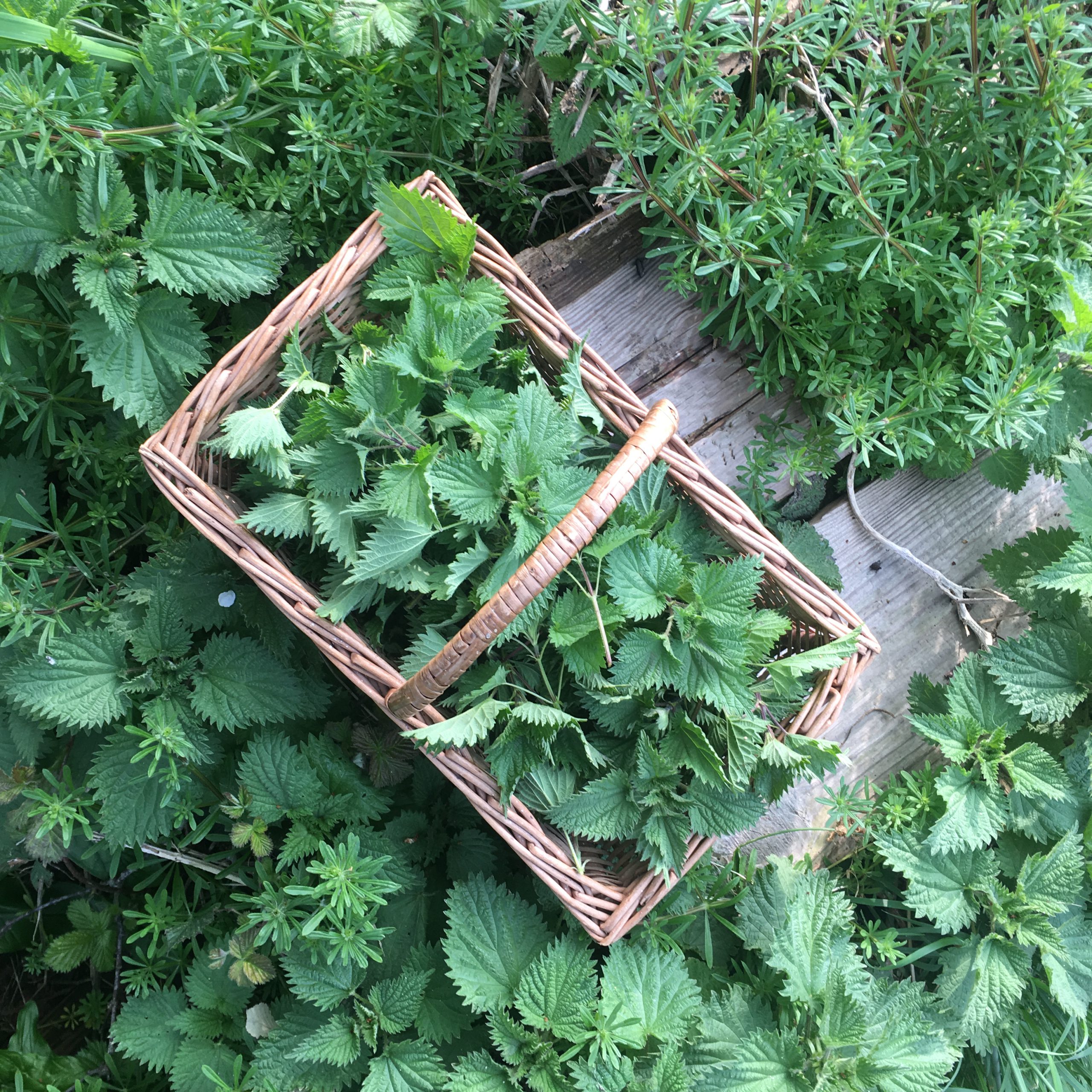
11.30AM WILD AND TASTY
Alex spots a cluster of Alexanders, a coastal plant brought by the Romans and prolific on the island. ‘In the spring, you can steam the stems then dress with butter and lemon juice. And in the autumn, I use the black seeds in place of pepper – so aromatic,’ she enthuses, as we nibble on the pungent seeds and nod.
Now we head down towards the beach, scouring the cliff path in search of our next foraged snack. ‘You can’t eat these raw, but they’re great cooked with other berries in a tart and packed with vitamin C and antioxidants,’ says Alex, plucking elderberries from a large buddleia-type bush, then showing us the five pointy-ended leaves at the tip of each branch. Crab apples, too, are added to her basket, from which she makes fruit leather, along with a scattering of pink tree mallow and coconut-scented gorse flowers, which she will use later to decorate a cake.
12PM DOWN TO THE SHORE
The seashore yields yet more foraged bounty and Alex instantly wins us over with her enthusiasm for sea beet. ‘If I had to choose, then I’d say sea beet is my favourite wild ingredient. It’s a great spinach substitute, you can add it to everything, from curries to pies. It’s available all year round and lasts for ages in the fridge,’ she grins.
At the bottom of the crumbling cliff we find a clump of rock samphire. ‘It’s a bit of a Marmite plant, but I love it pickled and served with a ploughman’s,’ says Alex. Sea purslane, a few rocks up, provides a satisfyingly salty crunch. ‘Just pick off the leaves, steam, add butter and serve with a poached egg,’ she advises, as everyone salivates, eyeing up the picnic boxes that Alex has prepared for us to eat after.
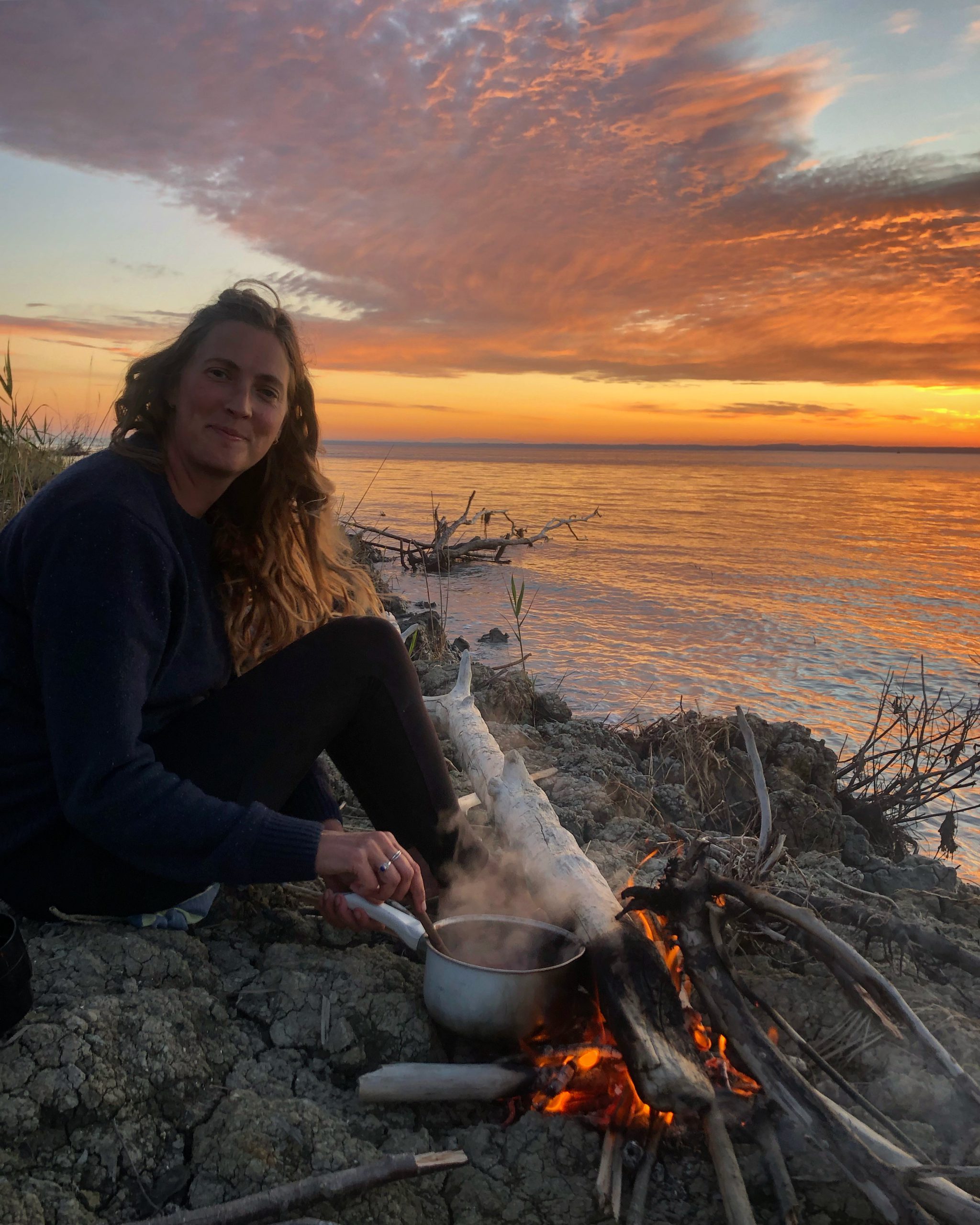
Read Campfire Cooking Guide next
12.30PM FORAGING FINALE
After a final gathering of sea kale, which is prolific on the south coast – the younger leaves best blanched and scoffed as a side or shredded into an omelette, we are told – we find a spot out of the wind for Alex to make her handwritten guide. As we crowd around, she scribbles the names of each of today’s finds on a piece of paper on which she places our gathered ingredients. We scrabble to capture it on our phones, the perfect reference for any future foraging.
Stomachs now rumbling audibly, we pick up our picnic boxes, say goodbye, and find the nearest groyne to hunker down behind to enjoy Alex’s well-thought- out, expertly cooked snacks made using many of the ingredients we had just seen and picked: nettle and feta filo tart, flapjack fruit bars made with hogweed seeds, damsons, rosehips and blackberries, sour crab apple fruit leathers, and foraged hazelnut chocolate truffles coated in nettle powder that are worth the trip alone.
ASK THE PRO
Occupational therapist Alex Richards started foraging four years ago, and now she’s obsessed (her words).‘The Isle of Wight is a forager’s paradise. You can find so many different things here, from the more usual sloes and blackberries to coastal sea buckthorn and different seaweeds, much of it extremely nutritious. There’s so much to love about foraging, it’s free food for the taking and once you start you can’t stop seeing it, whether you’re paddleboarding or walking. It’s also beneficial to your mental health – it gets you out into nature, it’s a very mindful thing to do. But you have be sensible about it. You can pick anything off public land for your own consumption, but you mustn’t dig up any roots. To ensure sustainability, gather only plants that are growing in profusion, picking only a little bit everywhere you go rather than taking lots from one spot.’
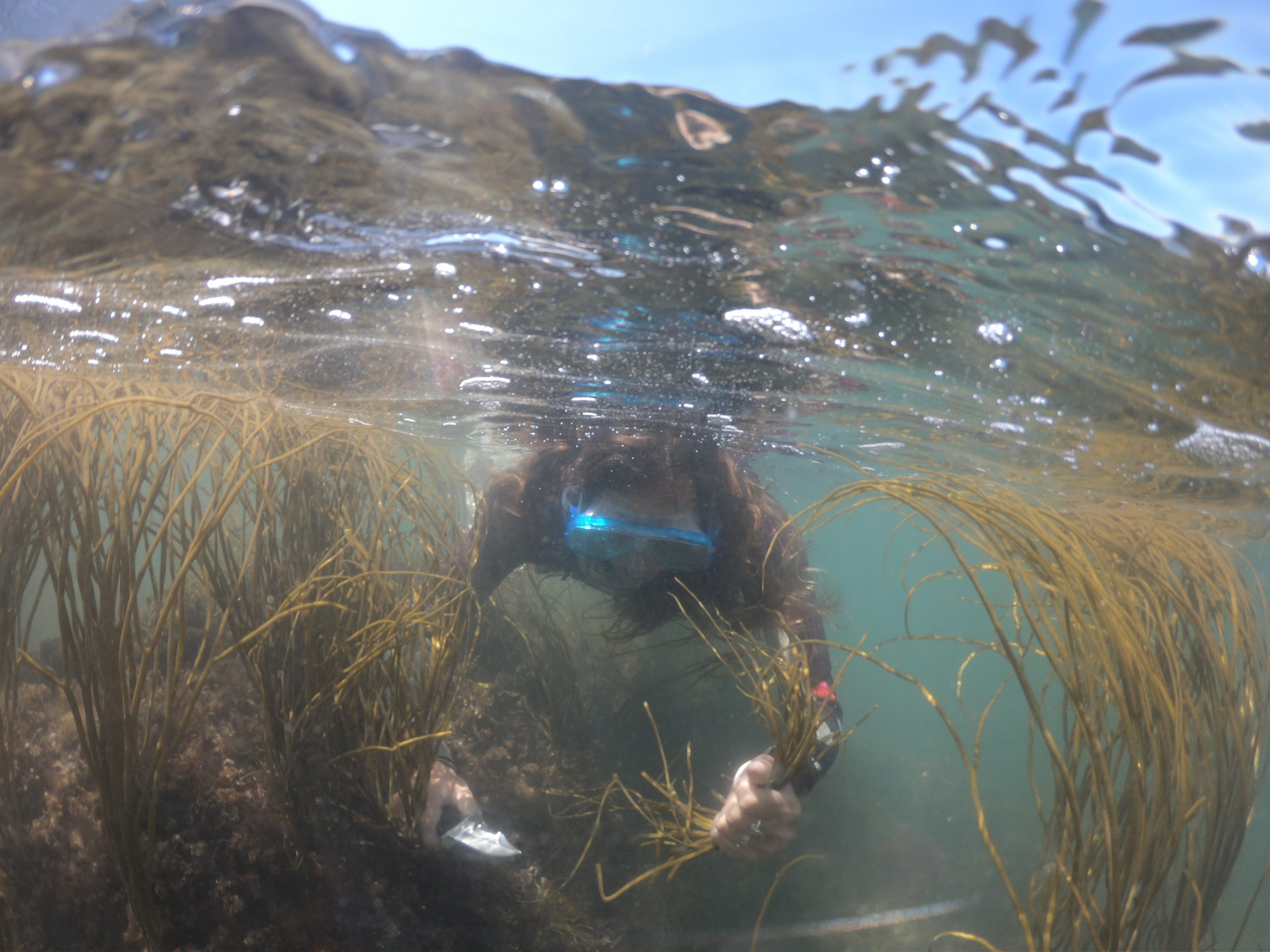
See the gallery below to discover Alex Richard's beautiful wild food creations.
To discover more coastal activities click here or pick up a copy of Coast
HOW TO BOOK A FORAGING WORKSHOP
Alex’s foraging and cooking courses are held over various weekends throughout the year. Anyone can take part, no previous experience is necessary. Wet weather gear is advised if the forecast is looking dodgy, and walking boots are also advised. Family groups are welcome and it’s free for children under 10 (though Alex limits little people to three per walk). Current Covid restrictions mean a maximum of five per course, increasing to a maximum of 10 post-pandemic. Alex also offers private foraging walks. The courses costs from £25pp and include a picnic lunch, plus a fact sheet with nutritional info and cooking tips. To book, go to islandwildfood.co.uk. Find Alex on Instagram @islandwildfood.
HOW TO GET THERE
Car ferries to the island with Red Funnel are available from Southampton (redfunnel.co.uk).
WHERE TO STAY
North House is a renovated townhouse on one of Cowes’ loveliest streets. A 14-bedroom boutique hotel, it offers a buzzy bar and restaurant, a terrace and a heated swimming pool. From £145 per night B&B (01983 209453, northhousecowes.co.uk).
The Hambrough’s sea views are hard to beat at this chic restaurantwith rooms in Ventnor, where all but one of the seven bedrooms has splendid sea views. From £120 per night B&B (01983 856333, thehambrough.com).

